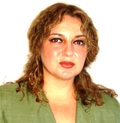Dear colleagues,
During the recent World Health Assembly (WHA), some policy developments regarding Universal Health Coverage (UHC) became apparent: DG Margaret Chan’s opening address referred to UHC as “one of the most powerful social equalizers among all policy options. The World Bank is a welcome partner in helping countries make their health systems more inclusive”. The DG considers this “to be a strong signal that UHC is financially feasible and makes good economic sense”. (http://www.who.int/dg/speeches/2014/wha-19052014/en/).
In other words: Countries do not need to wait for economic development any more before investing in health protection for all and such investments contribute significantly to equity. This move has long been awaited: Already in 2001, the International Labour Conference (ILC) reached a consensus that countries should give high priority to extending health protection to all and in its 2008 health protection strategy ILO made the point that such investments are possible for countries at all income levels (http://www.ilo.org/gimi/gess/ShowRessource.action?ressource.ressourceId=5956). This has been recently reaffirmed in the ILO Social Protection Floors Recommendation, 2012 (N°. 202) (http://www.ilo.org/gimi/gess/RessourcePDF.action?ressource.ressourceId=31088) on national floors of social protection.
But how can UHC be achieved? The DG of WHO stated that “universal coverage cannot be achieved through private market-based systems of user fees and private insurance, or through voluntary community-based schemes.” (http://www.who.int/dg/speeches/2014/uhc/en/). This is confirmed in many developing countries: The market or charities were not able to abolish impoverishment from high health care costs and achieve access to health care for all. This requires the overall and primary responsibility of the State, as stated in the Recommendation.
Worrying is a statement from the joint WHO/WB monitoring framework for UHC for post 2015. (http://www.who.int/healthinfo/universal_health_coverage/en/): This framework suggests measuring UHC in terms of some "tracer interventions" rather than focusing on all treatments and preventive measures that constitute essential health care. And what is worse, the measurement is limited to the poorest 40 % of the population. How can we talk about universality if only some limited treatments for 40 % of the poorest are meant? Universality is defined as 100 % of at least essential health care and not less! How can equity, inclusiveness and the right to health be achieved in countries such as Burundi, where more than 80 per cent of the population is living on less than 2 US$/day? What about the equalizing effects and the economic sense of UHC?
Xenia Scheil-Adlung
Health Policy Coordinator
Social Protection Department
International Labour Organization
During the recent World Health Assembly (WHA), some policy developments regarding Universal Health Coverage (UHC) became apparent: DG Margaret Chan’s opening address referred to UHC as “one of the most powerful social equalizers among all policy options. The World Bank is a welcome partner in helping countries make their health systems more inclusive”. The DG considers this “to be a strong signal that UHC is financially feasible and makes good economic sense”. (http://www.who.int/dg/speeches/2014/wha-19052014/en/).
In other words: Countries do not need to wait for economic development any more before investing in health protection for all and such investments contribute significantly to equity. This move has long been awaited: Already in 2001, the International Labour Conference (ILC) reached a consensus that countries should give high priority to extending health protection to all and in its 2008 health protection strategy ILO made the point that such investments are possible for countries at all income levels (http://www.ilo.org/gimi/gess/ShowRessource.action?ressource.ressourceId=5956). This has been recently reaffirmed in the ILO Social Protection Floors Recommendation, 2012 (N°. 202) (http://www.ilo.org/gimi/gess/RessourcePDF.action?ressource.ressourceId=31088) on national floors of social protection.
But how can UHC be achieved? The DG of WHO stated that “universal coverage cannot be achieved through private market-based systems of user fees and private insurance, or through voluntary community-based schemes.” (http://www.who.int/dg/speeches/2014/uhc/en/). This is confirmed in many developing countries: The market or charities were not able to abolish impoverishment from high health care costs and achieve access to health care for all. This requires the overall and primary responsibility of the State, as stated in the Recommendation.
Worrying is a statement from the joint WHO/WB monitoring framework for UHC for post 2015. (http://www.who.int/healthinfo/universal_health_coverage/en/): This framework suggests measuring UHC in terms of some "tracer interventions" rather than focusing on all treatments and preventive measures that constitute essential health care. And what is worse, the measurement is limited to the poorest 40 % of the population. How can we talk about universality if only some limited treatments for 40 % of the poorest are meant? Universality is defined as 100 % of at least essential health care and not less! How can equity, inclusiveness and the right to health be achieved in countries such as Burundi, where more than 80 per cent of the population is living on less than 2 US$/day? What about the equalizing effects and the economic sense of UHC?
Xenia Scheil-Adlung
Health Policy Coordinator
Social Protection Department
International Labour Organization

